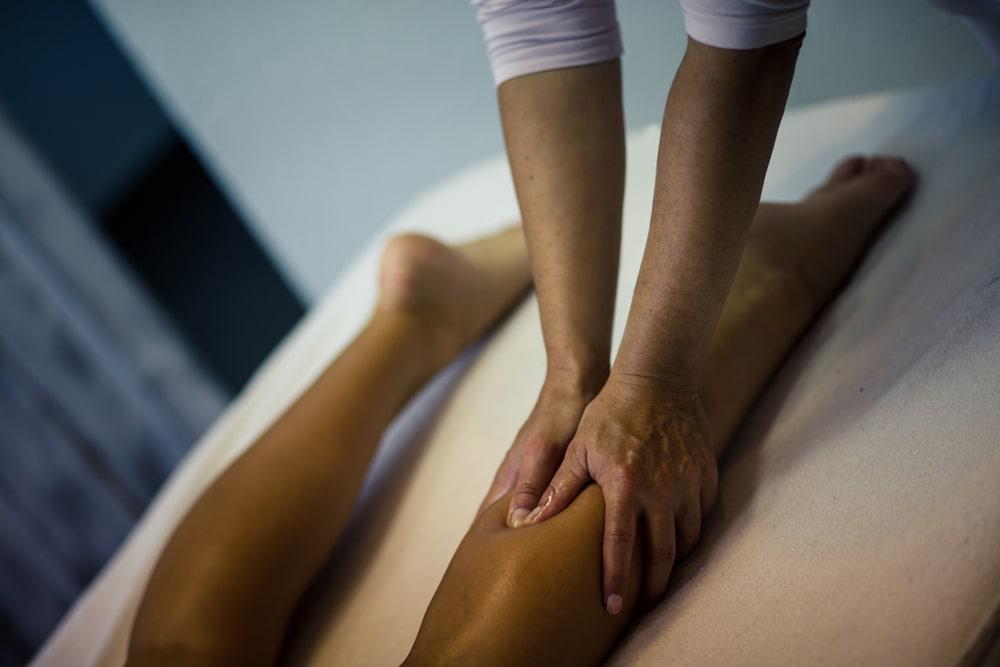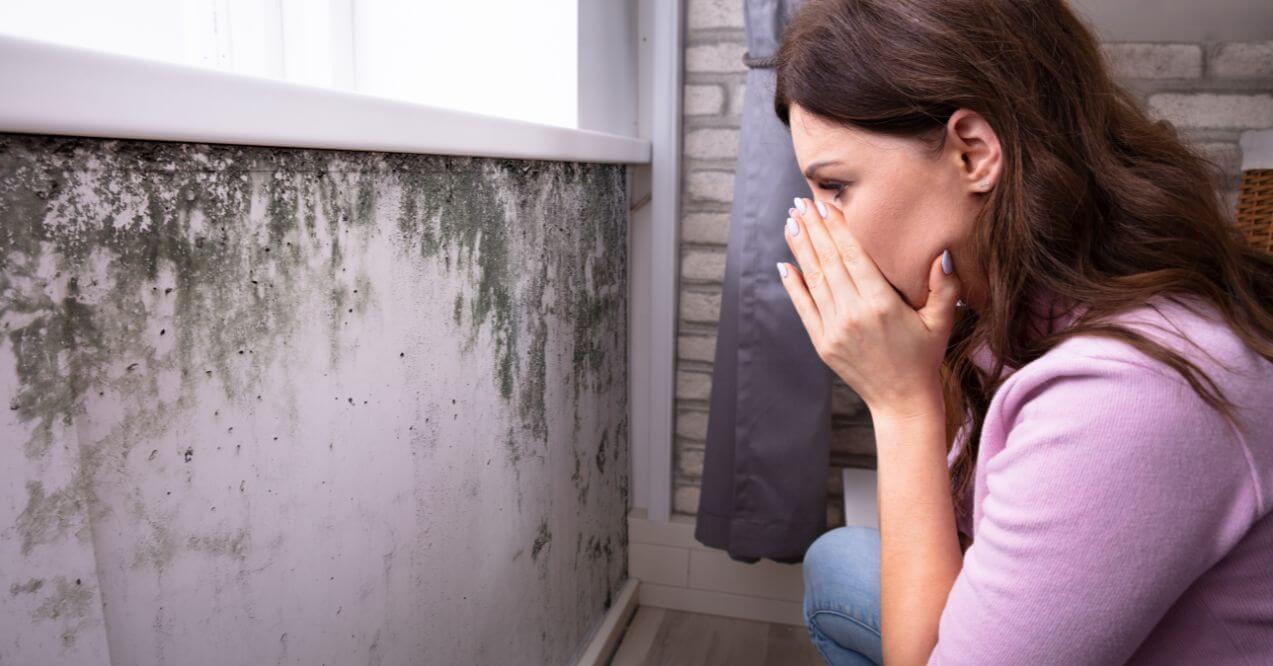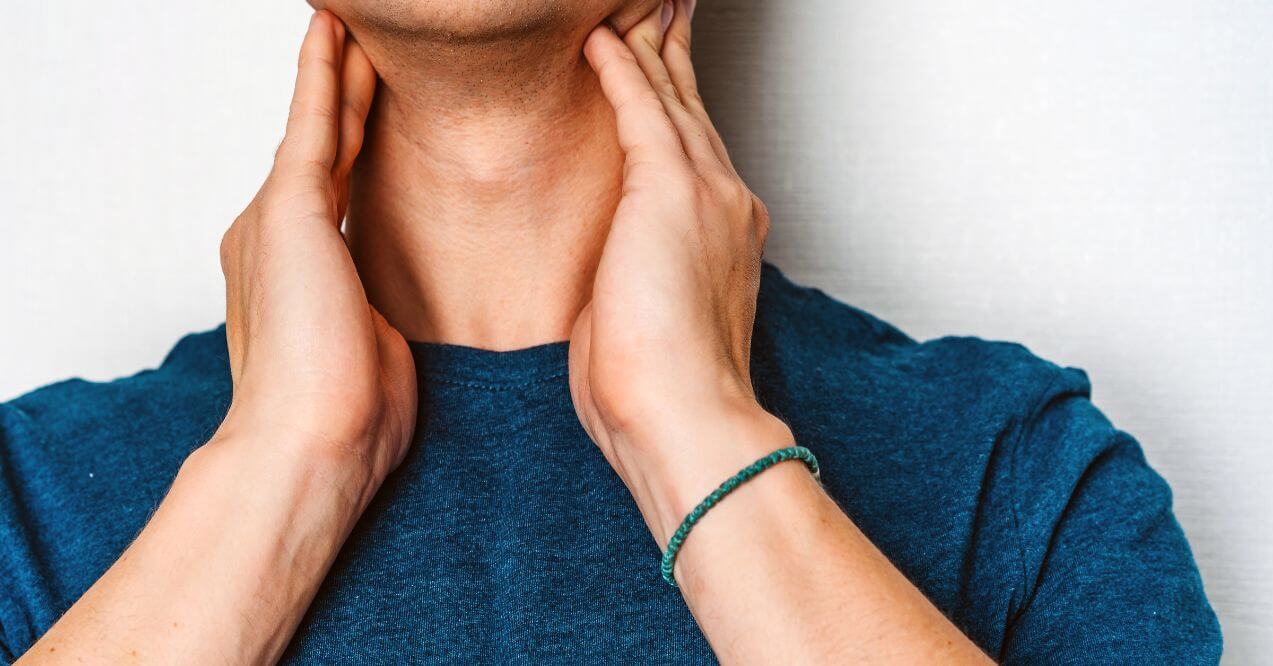How and When to Use a Lymphatic Drainage Machine?
Discover how to properly use a lymphatic drainage machine to support your wellness routine. Learn when and how to incorporate these devices effectively.
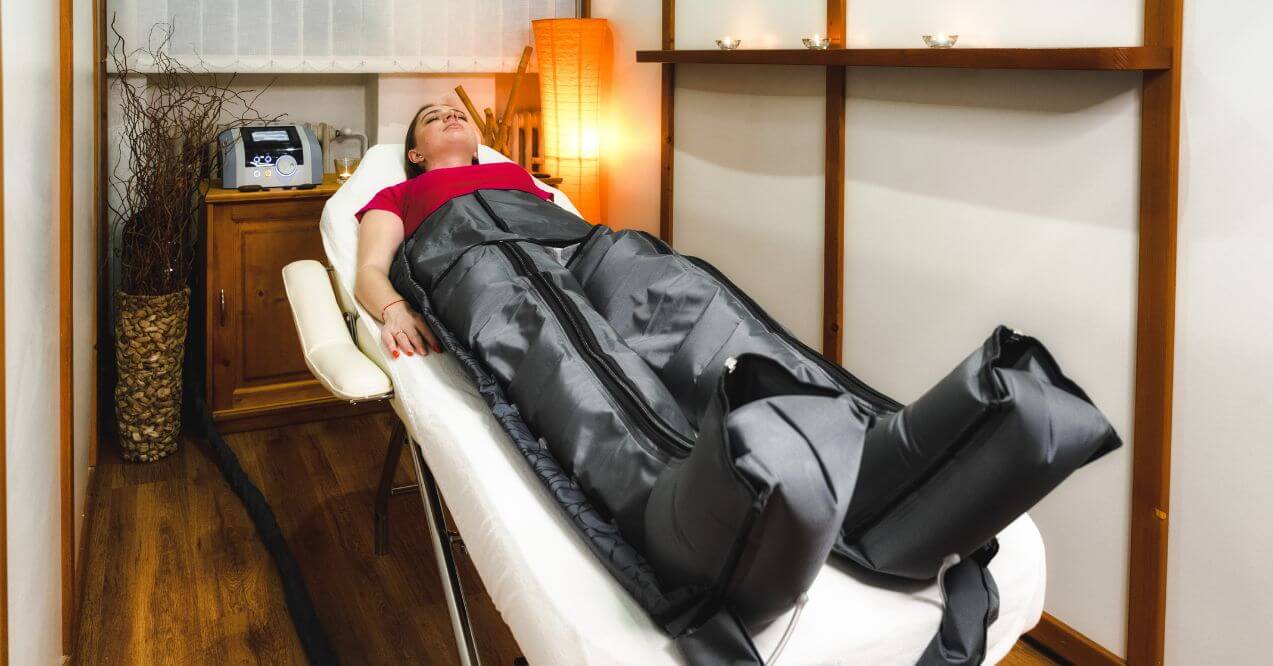

Have you noticed the growing popularity of lymphatic drainage machines in wellness circles? These devices are making waves as more people discover their potential benefits for supporting the body’s natural cleansing processes.
But how exactly should you incorporate a lymphatic drainage machine into your wellness routine? When is the right time to use one, and which type might be most suitable for your needs? These questions are increasingly common as these machines become more accessible for home use, so today we will try to answer them all.
What Is a Lymphatic Drainage Machine?
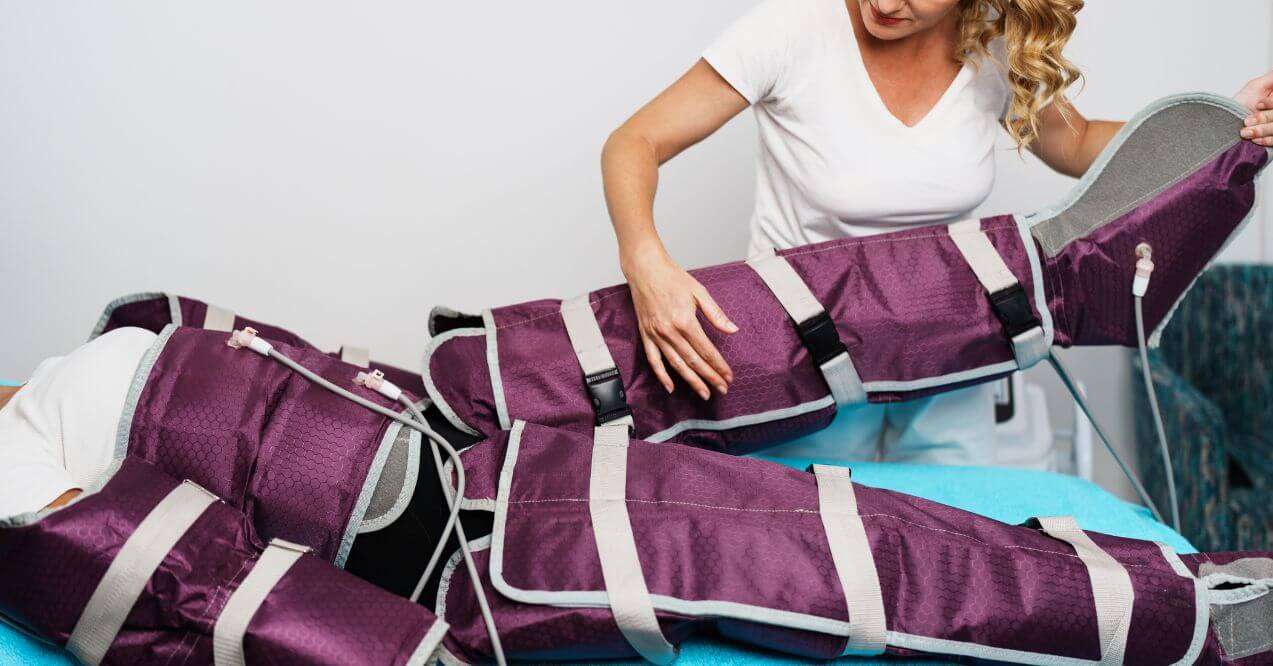
A lymphatic drainage machine is a wellness device designed to support your body’s natural waste removal system by gently stimulating lymphatic flow. These specialized tools help encourage the movement of lymph fluid through your body’s tissues, potentially assisting with fluid balance. Several types of lymphatic drainage machines are available:
- Pneumatic compression devices – Use inflatable sleeves that apply gentle pressure to limbs.
- Vibration plates – Create whole-body vibrations that may stimulate lymph movement.
- Endosphere therapy – Uses specialized rollers that apply pressure in rhythmic patterns.
- Manual lymphatic massage machines – Typically handheld devices that mimic manual techniques.
It’s important to understand that these machines work best as companions to healthy lifestyle practices – not replacements. Regular movement, proper hydration, and balanced nutrition remain essential for supporting your lymphatic system’s function.

How to Use a Lymphatic Drainage Machine?
| Machine Type | Cuff/Placement (if applicable) | Session Duration | Frequency | Other Instructions |
| Pneumatic Compression | Secure but not too tight around limbs (legs, arms, torso); follow manufacturer’s guide | 20-30 minutes | As recommended by your therapist/doctor; may be daily or several times per week. | Start with lower pressure and gradually increase as tolerated. |
| Vibration Plate | Stand comfortably on the plate, maintaining balance | 10-15 minutes | 2-3 times per week | Vary stance and intensity levels as comfortable. |
| Endosphere Therapy | Typically administered by a trained professional | Varies by treatment | As recommended by your therapist. | Consult with a qualified practitioner for personalized treatment plans. |
| Manual Lymphatic Drainage Machine | Follow specific manufacturer instructions carefully | Varies by machine | As recommended by your therapist/doctor. | These machines often mimic gentle massage techniques; ensure proper training if self-administering. |
Before using any lymphatic drainage machine, take time to thoroughly read the manufacturer’s instructions. Each device has specific guidelines designed for optimal results and safety.
Start slowly with shorter sessions and gentler settings, gradually increasing duration and intensity as your body adjusts. Many people find that consistency matters more than intensity.
- Hydrate well before and after sessions to support fluid movement
- Wear comfortable, loose-fitting clothing during treatment
- Listen to your body – if something feels uncomfortable, adjust or stop
- Keep expectations realistic – results vary from person to person
Many users report feeling most comfortable using these machines in the evening as part of a relaxation routine. Morning sessions may help some people feel more energized for the day ahead.
When Should You Use a Lymphatic Drainage Machine?

A lymphatic drainage machine like the lympha press may be helpful during periods of reduced mobility, after long periods of sitting, or when you’re seeking to support overall wellness. Many users incorporate these devices into their self-care routines during seasonal changes or as part of regular maintenance. Consider using a lymphatic drainage machine:
- After long travel days or extended sitting
- As part of your evening relaxation routine
- When experiencing temporary feelings of heaviness in the limbs
- To complement your regular physical activity program
However, these machines aren’t appropriate for everyone. Avoid using a lymphatic drainage machine if you have certain skin conditions, infections, blood clots, or heart conditions. Always discuss with a wellness professional before beginning any new regimen, especially if you have ongoing health concerns.
Claimed Benefits of Lymphatic Drainage Machines
Many wellness enthusiasts report positive experiences with lymphatic drainage machines. While these devices continue to grow in popularity, it’s important to note that scientific research is still evolving in this area. Here are some commonly reported benefits in wellness communities:
1. Temporary Fluid Balance and Swelling Reduction
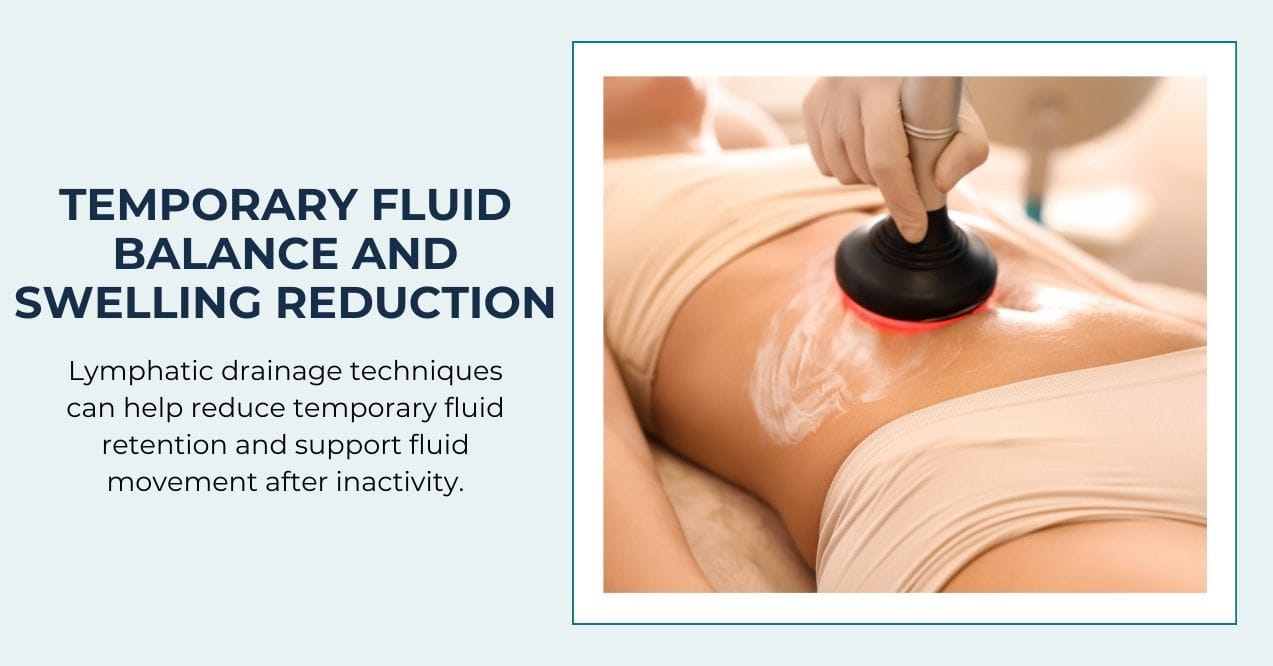
Lymphatic drainage techniques have gained attention for their potential to address temporary fluid retention. Many users turn to these machines after periods of inactivity, such as long flights or desk-bound days. The gentle pressure may help encourage fluid movement in areas where it tends to accumulate.
Some people with swelling of preauricular lymph nodes may find these techniques interesting to explore as part of their overall wellness approach.
2. Circulation and Post-Exercise Recovery
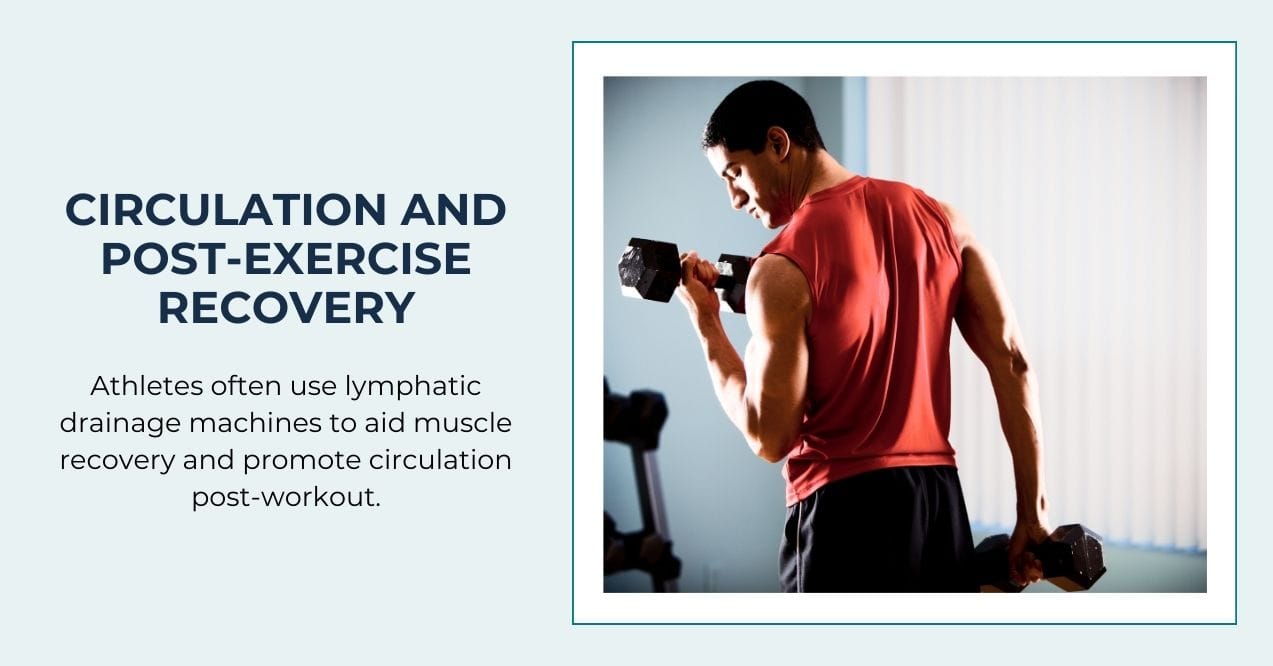
Athletes and fitness enthusiasts often incorporate lymphatic drainage machines into their recovery routines. The gentle stimulation may support muscle recovery after intense workouts by promoting circulation to tired muscles. Many users report feeling refreshed after sessions, especially following strenuous physical activity.
3. Skin Appearance and Puffiness Reduction
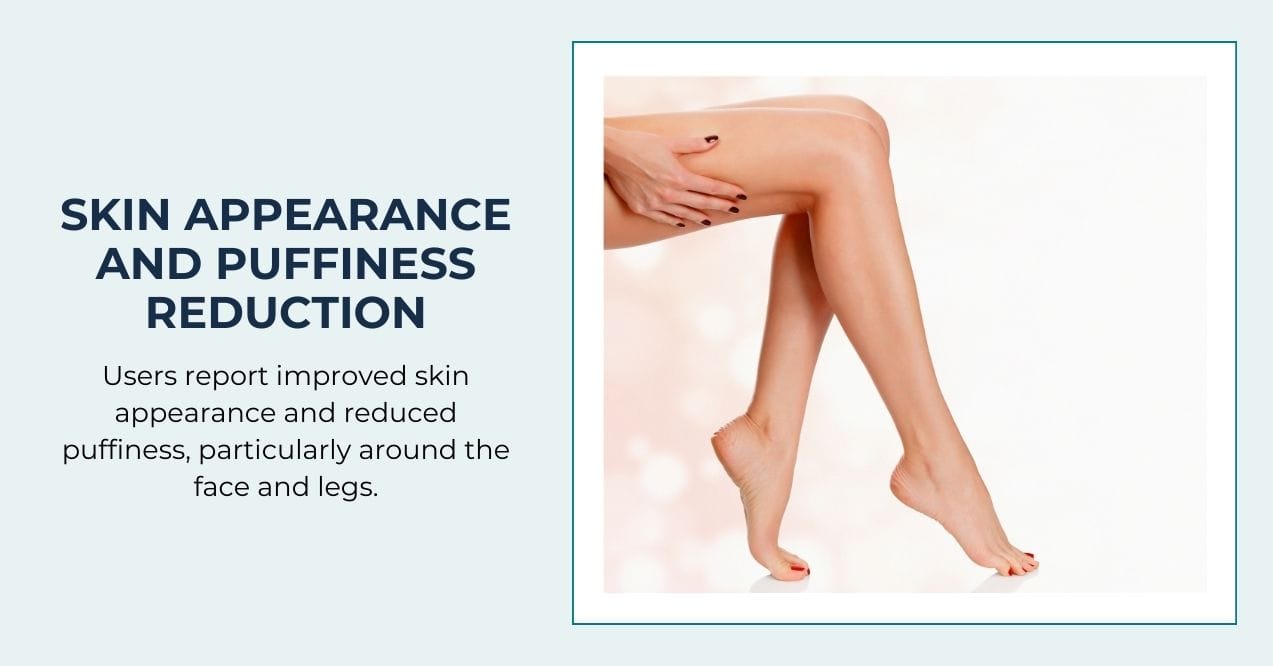
Many users share anecdotal reports of improved skin appearance, particularly regarding temporary puffiness around the face and legs. The gentle stimulation may temporarily enhance the skin’s natural glow by supporting fluid balance in the tissues.
Natural Ways to Support Your Lymphatic System
Your lymphatic system doesn’t have a built-in pump like your heart, which is why movement and other natural approaches are so important for keeping it functioning well:
- Exercise and Movement – Regular physical activity naturally stimulates lymph flow. Even gentle options like walking, swimming, or stretching can make a significant difference. Just 20-30 minutes daily helps keep your lymphatic system active.
- Hydration and Diet – Staying well-hydrated helps maintain proper lymph fluid consistency. Colorful fruits and vegetables support overall lymphatic health, as do certain herbs for lymphatic system support such as calendula, cleavers, and red clover when used as part of a balanced approach.
- Stress Management and Other Tips – Regular deep breathing exercises and gentle self-massage can support lymphatic flow. Elevating your legs when resting and avoiding tight, restrictive clothing also promotes natural drainage and comfort.
For those looking to complement these natural approaches, lymph system supplements can provide additional support in maintaining lymphatic wellness. These supplements work alongside your healthy lifestyle habits to support optimal lymph fluid flow and reduce temporary fluid retention.

They can be especially helpful during seasonal changes or busy periods when maintaining your usual exercise routine becomes challenging. Consider them as another tool in your holistic approach to lymphatic health.
Conclusion
Lymphatic drainage machines may provide temporary support for circulation and comfort, but their effectiveness depends on your individual needs and lifestyle habits. While many report positive experiences, these devices work best as complementary tools rather than standalone solutions.
For optimal results, pair machine use with consistent hydration, regular movement, and balanced nutrition. Your daily habits significantly impact your lymphatic health. By supporting this important system through multiple approaches, you’re making a valuable investment in your overall well-being.
Many people find evenings ideal for lymphatic drainage sessions, as part of a relaxation routine. Mornings can energize your day, while sessions after long periods of sitting or travel may feel particularly beneficial.
Signs that may suggest supporting your lymphatic system include temporary feelings of heaviness in limbs, mild puffiness, or sluggishness after periods of inactivity. Regular maintenance, regardless of symptoms, can be part of overall wellness.
Lymphatic drainage machines may support circulation and temporary comfort for many users. While scientific research is still developing, many report positive experiences when these devices are used consistently alongside healthy lifestyle habits.
Lymphatic drainage typically focuses on gentle pressure along lymphatic pathways, particularly near the neck, underarms, and groin where lymph nodes concentrate. Always follow device instructions or consult with a trained professional for proper technique.
Sign up for our Healthy Living newsletter!
Advertisement. This site offers health, wellness, fitness and nutritional information and is designed for educational purposes only. You should not rely on this information as a substitute for, nor does it replace, professional medical advice, diagnosis, or treatment. If you have any concerns or questions about your health, you should always consult with a physician or other health-care professional. Do not disregard, avoid or delay obtaining medical or health related advice from your health-care professional because of something you may have read on this site. The use of any information provided on this site is solely at your own risk.



